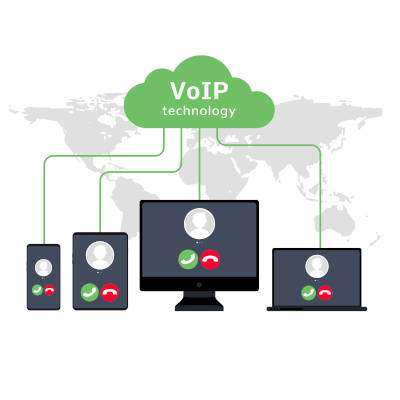Your business needs its technology to fuel its day-to-day operations; that means they need to be maintained. Companies that don’t have an IT department will often look to utilize different strategies to ensure their IT is up and running. However, without the proper expertise, keeping this technology maintained can be a significant problem.
Macro Systems Blog
Artificial intelligence can be utilized in numerous ways, but one way you might not have anticipated is as a means of making sure people on the Internet mind their manners. Inappropriate and rude comments are remarkably common online, so it stands to reason that many companies and developers are looking for ways to reduce them. Let’s look at what some have implemented, utilizing artificial intelligence to their advantage.
Since the start of the COVID 19 pandemic, it has been clear that many businesses were not prepared to continue their operations remotely. This was largely due to their leadership being convinced in recent years that permitting people to work remotely would lead to a significant reduction in production, leading them to be unprepared to shift to remote functionality. Cybercriminals have taken advantage of many companies as a result. Below we discuss what needs to be accomplished to secure endpoints from afar.
Microsoft Word has lots of time-saving capabilities. For example, did you know that you can paste the same text across numerous documents? This makes it simple to replicate text without having to fix it each time, and to make changes everywhere the text appears all at once. Listed below is how to do so.
Technology has made its way into nearly every business, especially this year with the Covid pandemic. There really is no choice, but with the commitment to technology there comes risk. If technology fails, your business takes a step back. Below we discuss how managed IT services work to manage your risk and keep your IT running effectively.
Most modern businesses and homes heavily rely on their Wi-Fi. It offers a lot more flexibility and value than a wired connection in many instances simply because people utilize a lot of wireless devices these days. Modern wireless internet is easier to install, is faster than ever, and works to protect network security better than ever before, once it is set up correctly. Listed below are a few tips you should know on how to successfully implement a Wi-Fi platform.
Social media has become culture-defining technology. The massive amounts of people that utilize the services each week, and the large amount of time people spend on these platforms, makes them critical resources for the lion’s share of businesses. The fact that the average user spends around two hours and 24 minutes per day perusing their social media gives businesses opportunities that weren’t available to them only a few short years ago. Listed below is a look at how different sizes of SMBs utilize this technology.
Keeping your network and infrastructure safe from cyberthreats is always a priority, but with so many people working remotely, businesses have encountered problems doing so. In fact, hackers and scammers have come out of the woodwork to try and gain entry into unauthorized networks or to steal data. Below is a look at how the COVID-19 pandemic has exacerbated the threats out there.
Over the past year, entrepreneurs have focused on how to do business amid the global COVID-19 pandemic. The public health crisis has been an opportunity for all kinds of cybercriminals, and the result has been an increase in losses (compared to the second-worst period on record) by over 50 percent. Below we consider the situation, and how it is, unfortunately, getting worse.
With smartphones becoming more costly every year, the top offerings from major manufacturers price some out of the market. This offers a chance for these companies to provide budget smartphones to a growing market of people who don’t want to drop $1,000 on a new phone. Listed below are options from Samsung, Google, and Apple that can be had for a fraction of the cost of today’s flagship smartphones.
Do you know when the last time your copier was serviced? Do you know if the software your business relies on has been updated and patched? If you have no idea about the answers to these questions, you may be staring disaster in the face. Below we discuss how you can ensure that your technology is managed and how you can keep your business from being jeopardized by a catastrophic operational issue.
If fortune smiles on your organization, you won’t ever have to deal with what we are about to discuss: ransomware. For the past several years ransomware has been a serious problem for businesses, governments, and individuals. Listed below is a discussion about the different types of ransomware and how some people want to put a ban on ransomware payments.
If you’re trying to limit your operating costs to give you more capital to build your business, it is imperative to keep in mind that sacrifice isn’t your only option. Instead, you also have the option of streamlining and minimizing some of your larger expenses by enlisting a managed services provider (MSP) and the more sustainable business model we adhere to.
As the businesses all over continue to be restricted in their operations, costs have been a consideration that they need to put some serious thought into. Luckily, there are many ways that you can invest in technologies that significantly benefit your business operations without breaking the bank. Listed below are five ways to maximize your benefits, without maximizing your investments.























